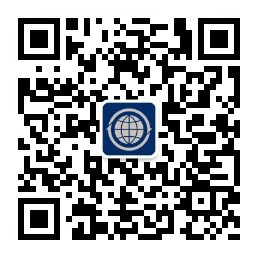1. Why China imposes additional tariffs on U.S. products?
Following the completion of the Section 301 investigation, the United States has imposed additional tariffs on products from China, the annual trade value of which amounts to approximately $250 billion in total. As countermeasures, China decided to impose additional tariffs on U.S products, the annual trade value of which amounts to approximately $110 billion in total.
2. What U.S. products are currently subject to additional tariffs?
To date, China has imposed additional tariffs on U.S products by two tranches.
• First Tranche:
- List 1: Since 6 July 2018, additional 25% tariffs have been imposed on products classified in a list of 545 HS subheadings.[1] This List 1 is available at:
http://gss.mof.gov.cn/zhengwuxinxi/zhengcefabu/201806/P020180616034361843828.pdf
It should be noted that the additional tariffs imposed on 28 HS subheadings covered in the above List 1 have been suspended since 1 January 2019. [2] See these subheadings at:
http://gss.mof.gov.cn/zhengwuxinxi/zhengcefabu/201812/P020181214637069015673.pdf
- List 2: Since 23 August 2018, additional 25% tariffs have been imposed on products, classified in a list of 333 HS subheadings.[3] This List 2 is available at:
http://gss.mof.gov.cn/zhengwuxinxi/zhengcefabu/201808/P020180808696052416638.pdf
It should be noted that the additional tariffs imposed on 116 HS subheadings covered in the above List 2 have been suspended since 1 January 2019. [4] See these subheadings at:
http://gss.mof.gov.cn/zhengwuxinxi/zhengcefabu/201812/P020181214637069345788.pdf
• Second Tranche (currently effective):[5]
Since 24 September 2018, additional 10% tariffs have been imposed on products classified within the 2493 HS subheadings identified in Annex 1 and 1078 subheadings in Annex 2, while additional 5% tariffs have been imposed on products classified within the 974 HS subheadings identified in Annex 3 and 662 subheadings in Annex 4. The four annexes are available at:
Annex 1:
http://gss.mof.gov.cn/zhengwuxinxi/zhengcefabu/201808/P020180803711628159425.pdf
Annex 2:
http://gss.mof.gov.cn/zhengwuxinxi/zhengcefabu/201808/P020180803711628507212.pdf
Annex 3:
http://gss.mof.gov.cn/zhengwuxinxi/zhengcefabu/201808/P020180803711628844240.pdf
Annex 4:
http://gss.mof.gov.cn/zhengwuxinxi/zhengcefabu/201808/P020180803711629144210.pdf
It should be noted that additional tariffs imposed on 67 HS subheadings covered in the Second Tranche have been suspended since 1 January 2019. [6] See these subheadings at:
http://gss.mof.gov.cn/zhengwuxinxi/zhengcefabu/201812/P020181214637070062288.pdf
• Second Tranche (to be implemented as of 1 June 2019):[7]
From 1 June 2019, the additional tariffs on certain products within the Second Tranche shall be raised to: Additional 25% tariffs for Annex 1 (2493 HS subheadings); additional 20% tariffs for Annex 2 (1078 HS subheadings); additional 10% tariffs for Annex 3 (974 HS subheadings); and additional 5% tariffs for Annex 4 (595 HS subheadings). The four annexes are available at:
Annex 1:
gss.mof.gov.cn/zhengwuxinxi/zhengcefabu/201905/P020190513719203602248.pdf
Annex 2:
gss.mof.gov.cn/zhengwuxinxi/zhengcefabu/201905/P020190513719204287788.pdf
Annex 3:
gss.mof.gov.cn/zhengwuxinxi/zhengcefabu/201905/P020190513719204715521.pdf
Annex 4:
gss.mof.gov.cn/zhengwuxinxi/zhengcefabu/201905/P020190513719205123756.pdf
3. For what products can a request for exclusion be made?
A request for exclusion can be made with respect to any product on which China has imposed additional tariffs and has not terminated or suspended such imposition.
Requests for exclusion shall be made at two rounds. Requests with respect to the products covered in the First Tranche, including List 1 and List 2, shall be made in the first round, while requests with respect to the products covered in the Second Tranche, including the four Annexes, shall be made in the second round. The First Tranche and Second Tranche mentioned here do not include those products on which the imposition of additional tariffs have been terminated or suspended, such as cars or spare parts.
4. Who is qualified to make a request for exclusion?
Any Chinese interested party may submit a request for exclusion. Interested parties include:
-
Enterprises within China who engage in import trade, manufacturing and utilizing of the relevant products; and
-
Industrial associations and chambers of commerce representing the above-mentioned enterprises.
Industrial associations or chambers of commerce are encouraged to file exclusion requests on behalf of their members. And in cases where an interested enterprise has already submitted relevant information to an industrial association or a chamber of commerce and the latter has already submitted exclusion requests, the interested enterprise is not permitted to file a duplicate exclusion request with respect to the same product.
5. On what grounds can an interested party request for exclusion?
An interested party requesting for exclusion is required to demonstrate that its request satisfies the following conditions:
- It is difficult to find alternative supply of the products concerned other than from the U.S.;
- The imposition of additional tariffs on the products concerned has caused, is causing or will cause severe economic harm to the requesting party; and
- The imposition of additional tariffs on the products concerned has caused, is causing or will cause significant negative structural economic impacts on relevant industries, including those with respect to development of the industries, advance of technologies, employment and environmental protection, or bring about severe social harm.
6. When can an interested party file an exclusion request?
Exclusion requests with respect to products covered in the First Tranche shall be filed from June 3, 2019 and by July 5, 2019.
Exclusion requests with respect to products covered in the Second Tranche shall be filed from September 2, 2019 and by October 18, 2019.
7. Where and to which authority should an interested party file an exclusion request?
The CTC is the competent authority for accepting and deciding on exclusion requests. Interested parties should, following the detailed instructions to be given later, fill out a form and submit the exclusion request via the website of the Tariff Policy Research Center of the Ministry of Finance (“MOF”) at: http://gszx.mof.gov.cn.
8. Are there any detailed requirements or instructions for filing an exclusion request?
More detailed instructions about how to file an exclusion request will be given later at the above-mentioned website. Below are several general requirements:
- One exclusion request shall be made with respect to products classified within one 8-digit HS subheading. If an interested party seeking to exclude products classified within more than 8-digit HS subheadings, it shall file a separate request for each 8-digit HS subheading.
- The requesting party is required to demonstrate, with facts and data, that its request satisfies the conditions as set out in Q5.
- The requesting party shall undertake that the formation provided to the authority is true. Requests containing false information would not be considered by the CTC.
9. Can an interested party file exclusion requests with respect to multiple products?
Yes, an interested party can file exclusion requests with respect to products classified within more than one 8-digit HS subheadings, provided that it files a separate request for each 8-digit HS subheading.
10. Will the information contained in an exclusion request be released to the public, particular if the request contains business confidential information?
Information contained in an exclusion request will only be used for the purpose of processing the exclusion request. Unless otherwise stipulated by laws and policies or per requests of government authorities, the information will not be disclosed to third parties without prior consents from the requesting party.
11. How will the CTC make its decision on whether to grant an exclusion request? And how would a requesting party know whether its request has been granted?
The CTC will examine, investigate and research on each valid exclusion request, i.e. any request that conforms to the CTC requirements and instructions (see Q8).
During the evaluation of a request, the CTC will solicit opinions from experts, associations and government authorities relevant to the request.
The CTC will then, in accordance with required procedures, formulate and promulgate a list of HS subheadings excluded from the additional tariffs (“List of Excluded Subheadings”).
12. Are there any criteria for the CTC to make its decisions?
The CTC will evaluate, among others, whether an exclusion request satisfies the following three conditions:
- Whether it is difficult to find alternative supply of the products concerned other than from the U.S.;
- Whether the imposition of additional tariffs on the products concerned has caused, is causing or will cause severe economic harm to the requesting party; and
- Whether the imposition of additional tariffs on the products concerned has caused, is causing or will cause significant negative structural economic impacts on relevant industries, including those with respect to development of the industries, advance of technologies, employment and environmental protection, or bring about severe social harm.
13. If an exclusion request is granted, when and for how long will the exclusion from tariff be effective?
An exclusion from the imposed additional tariffs will be effective starting from the implementation date of the List of Excluded HS Subheadings, and extending for a period of one year. Additional customs duties imposed on the products covered in this List will not be levied within this period.
14. If my exclusion request is granted, can I apply for the refund of customs duties that I have paid, and under what circumstances?
If an exclusion request is granted, the customs duties that have been paid with respect to the imports of the product concerned may be refunded at the request of the relevant importing enterprises, provided that either of the following conditions is met:
- In the List of Excluded HS Subheadings, an 8-digit HS subheading is completely excluded from the additional tariffs; or
- In the List of Excluded HS Subheadings, only certain particular products within an 8-digit HS subheading are excluded and the customs authorities are able to refund the duties already paid, e.g. there exists an extra code for the particular products excluded. In other words, there exists a 10-digit HS Subheading for the excluded products.
An application for duty refund shall be made with the Customs authorities within 6 months from the date of promulgation of the List of Excluded Subheadings.
[1] See the Notice of the Customs Tariff Commission of the State Council on the Imposition of Additional Tariffs on 50 Billion Dollars’ Products of U.S Origin (Notice No. 5 [2018] of the Customs Tariff Commission of the State Council (“CTC”)).
[2] See the Notice of the Customs Tariff Commission of the State Council on Suspending the Tariffs on Cars and Spare parts of U.S Origin (Notice No. 10 [2018] of the CTC);
See also the Notice of the Customs Tariff Commission of the State Council on Continuing to Suspend the Tariffs on Cars and Spare parts of U.S Origin (Notice No. 1 [2019] of the CTC).
[3] See the Notice of the Customs Tariff Commission of the State Council on the Imposition of Additional Tariffs on 16 Billion Dollars’ Products of U.S Origin (Notice No. 7 [2018] of the CTC).
[4] See the Notice No. 10 [2018] of the CTC and the Notice No. 1 [2019] of the CTC.
[5] See the Notice of the Customs Tariff Commission of the State Council on the Imposition of Additional Tariffs on 50 Billion Dollars’ Products of U.S Origin (Second Batch) (Notice No. 6 [2018] of the CTC) and the Notice of the Customs Tariff Commission of the State Council on the Imposition of Additional Tariffs on 60 Billion Dollars’ Products of U.S Origin (Notice No. 8 [2018] of the CTC).
[6] See the Notice No. 10 [2018] of the CTC and the Notice No. 1 [2019] of the CTC.
[7] See the Notice of the Customs Tariff Commission of the State Council on Raising the Tariffs on Certain Products of U.S Origin (Notice No.3 [2019] of the CTC).









